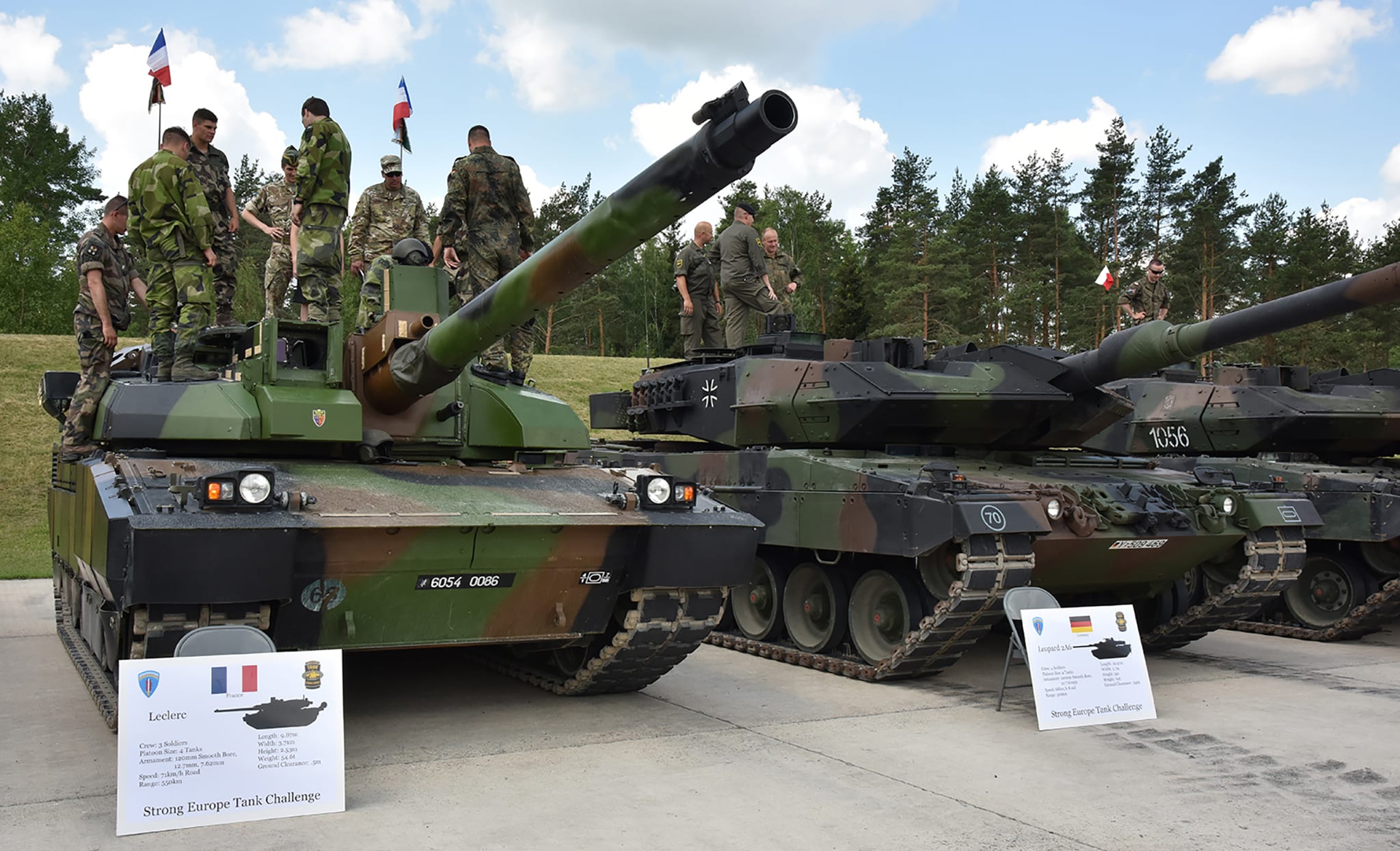Europe holds some of the world’s greatest armament industries, in land, sea or air segments. But facing the long-term plague of market fragmentation, Europe should probably base its nascent consolidation strategy on land defence systems, where it competes best on the global market. But if Europe possesses excellent technology, it is still lacking one essential ingredient: leadership.
The question of leadership is important on the European defence market because it represents the main negative factor, both for sales dynamics and for the overall defence setting. Europe possesses among the highest technological levels in the world, and also has production capabilities which rank it at the top of the global list. So why is it that Europe so consistently underperforms on the defence market? Independent reporter Tom Embury-Dennis writes: “In the days around a tumultuous NATO summit meeting last summer, the New York Times reported, Mr Trump told his top national security officials he did not see the point of the western military alliance, which he presented as a drain on the US.” By comparison, the North American market has very similar technological and production levels, but is integrated, meaning that development programs are evenly distributed across the entire industry, with few cases of direct competition on specific programs. While the free market principle still applies, the unified US government hands out contracts and responsibilities to specific companies, making sure that no time and money is wasted with two separate suppliers working on the same projects. Such a situation, which amounts to a substantial loss of military power, occurs regularly on the European scene, with the multitude of sovereign States calling upon suppliers. Europe, for instance, has four main battle tanks (Challenger 2, Leclerc, Leopard 2, and Ariete which are all comparable), while the United States concentrates on the Abrams. Billions have been spent on developing the French Rafale, and more billions on the German Eurofighter, and yet more billions on the Swedish Gripen, while Washington has focused its available funds on developing the F-22/35 program. With proper defence network integration, Europe would dramatically increase its defensive potential. But where to start?
Land defence is the best segment to begin with. Armoured technology has become so complex that only a few countries now are able to design and build a modern main battle tank, from the alpha to the omega. All others are jigsaws and patchworks. For instance, Italy entrusted national company FIAT with its Ariete main battle tank program but purchased the turret and barrel directly from Germany’s Rheinmetall, for lack of technological know-how. Military expert John Detrixhe reports: “Also troubling for Europe, however, is the area of defence where it surpasses the US, which is in the number of redundant weapon systems. The American military has one main type of battle tank system, for example, whereas the EU has 17, according the white paper. Overall, the US has 30 separate types of weapon systems in the white paper’s selected categories, versus 178 for the EU.” If European nations are taken individually, then the continent is rife with technological holes and missing bits of know-how. But as a whole, Europe is able to build some of the most powerful pieces of military equipment in the world. German firms KMW and Rheinmetall and French counterparts Nexter are recognized as global leaders in panzer technology, exporting their products worldwide. France is the only nation to have achieved a proper result with truck-mounted artillery, which makes howitzers simultaneously mobile and highly-protected – a welcome solution for armies which, until now, had always has to choose between towed tubes and tank-mounted artillery. France is also at the origin of the new CTA 40 calibre, which gives infantry fighting vehicles increased range, firepower and mobility, superior to all similar vehicles. Land defence is a technologically rich and highly fragmented segment, and therefore starting the integration there would be a sound decision. But who should be entrusted with the decision-making?
The answer is unequivocally France. With the European Union currently falling apart, Europe needs to get its game together more than ever. While Germany does possess a considerable military industry, it is also very timid on the international military scene. Small contributions to international operations and a tepid military culture since 1945 make Germany the ideal military hardware producer, but also lacking in military experience and expertise to lead the continent towards self-standing defence on security matters. France, on the other hand, has a comparable industrial and technological level but is also a major contributor to international military operations, and has therefore raked in much military experience in recent years. As Europe’s most powerful and experienced army, it alone could apply to lead the continent’s defence strategy, with its German partner. Other countries in Europe have either too little geopolitical gravitas or excessively fragmented industry. Both the German and French heads of state have recently made announcement which tend to show that the strategy is deemed suitable to all those involved, and that Europe is starting a new defence strategy, on the continental level. German newspaper Handelsblatt reports: “A short announcement that appeared on the German defence ministry’s website last Wednesday afternoon seems to confirm this. German defence minister Ursula von der Leyen and her French counterpart, Florence Parly, announced they are awaiting a joint plan from Germany’s Rheinmetall and KNDS (a Netherlands-based holding company comprising arms-makers, Germany’s Krauss-Maffei Wegmann, or KMW, and France’s Nexter) about the development of a combat ground system, including tanks.”
The consolidation process has started, and it is unlikely to stop, due to the US’s shaking of the NATO alliance. European nations have indeed realized that NATO will only go so far in defending them and that military and industrial integration is the next natural step in the construction of Europe. In ten years or so, the consolidation process should come to a term, with a balanced Franco-German-led industry, rationalizing and supporting all the defence resources of Europe.
